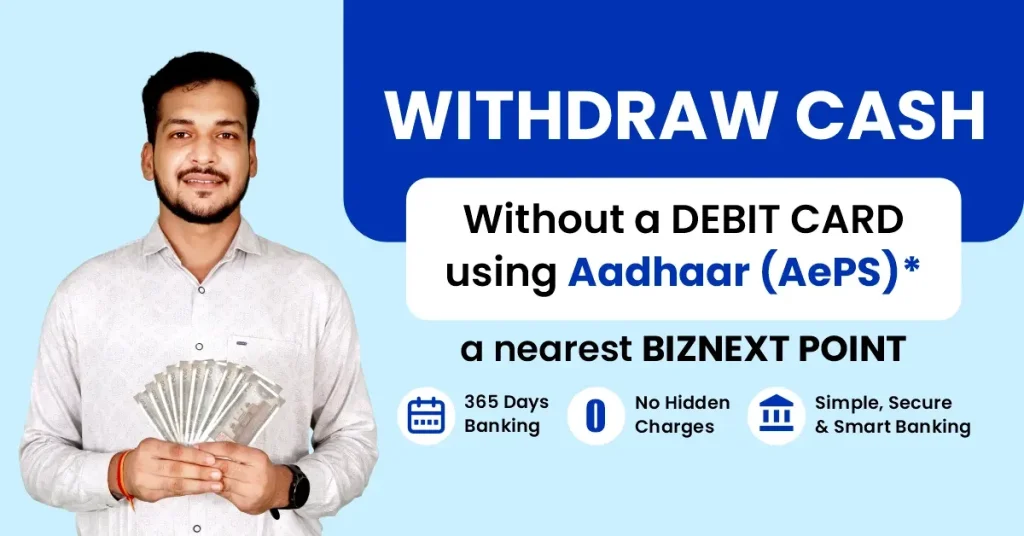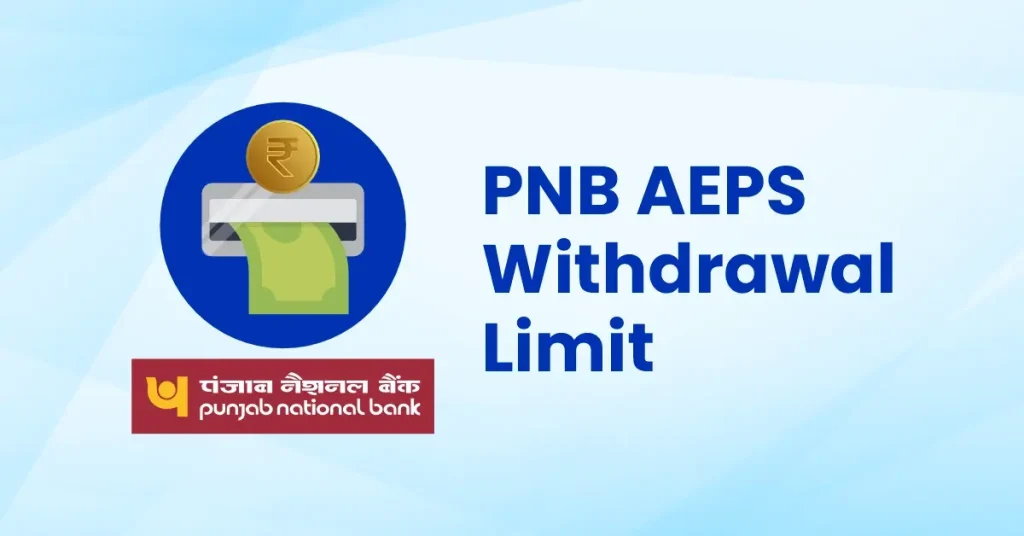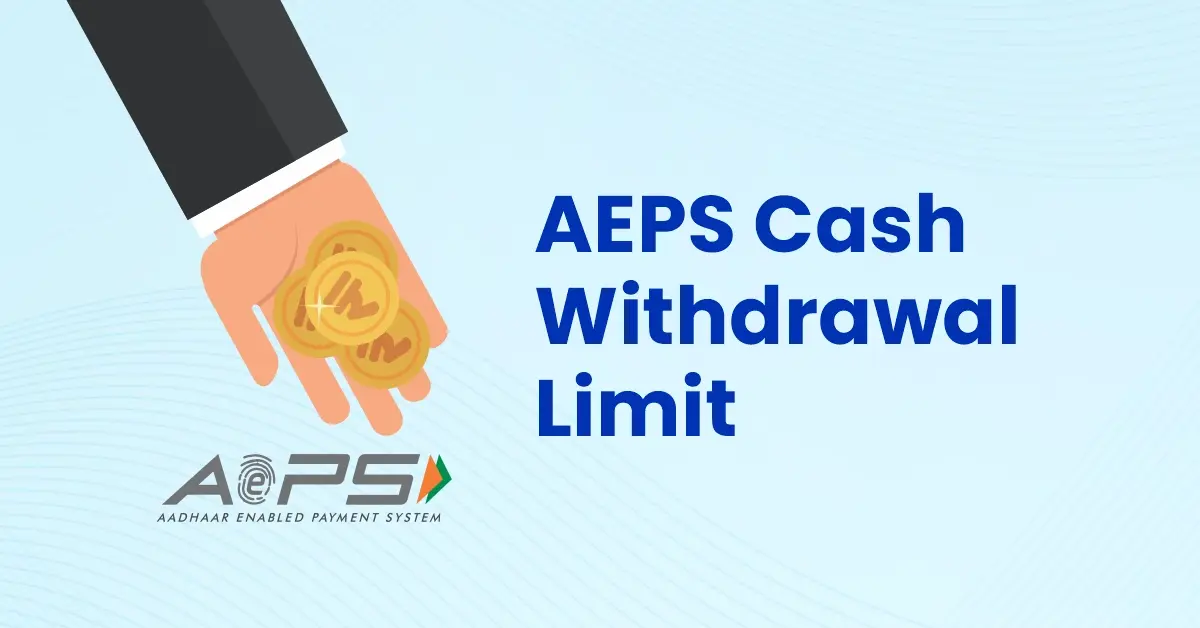The Aadhaar Enabled Payment System (AEPS) is a way for people to do banking using their Aadhaar card. One important thing to know about AEPS is its cash withdrawal limit. This limit tells you how much money you can take out at once from your bank account using AEPS. It’s like a rule that helps you know the maximum amount you can withdraw. Understanding this limit is important for everyone who uses AEPS, as it affects how much money you can access easily from your bank account.
What is the AEPS Transaction Limit per day?
To prevent misuse or fraud, some banks have set limits on AEPS transactions. For instance, many banks allow a maximum total transaction of INR 50,000 per day for everyone. However, it’s important to know that the National Payments Corporation of India (NPCI) has set a specific limit for AEPS cash withdrawals, which is Rs. 10,000.
This means that even though you can make transactions totalling up to INR 50,000 in a day through AEPS, you can only withdraw a maximum of Rs. 10,000 in cash using this method. These limits are there to ensure transactions are safe and secure while making banking convenient for users.
Also Read: How to Activate (Enable) AEPS Service

AEPS Cash Withdrawal Limit Per Month
The AEPS withdrawal limit per month is set at Rs. 50,000. The National Payments Corporation of India (NPCI) suggests that this limit should be calculated based on a rolling 30-day period. This means that instead of considering just the current month, transactions over the past 30 days are taken into account when determining if the limit has been reached. Banks issuing AEPS cards may also opt to apply this limit on a rolling daily basis, which helps in better managing the limit and ensuring smoother transactions for users.
What is the IPPB AEPS Withdrawal Limit?
At India Post Payments Bank (IPPB), there’s no specific limit on AEPS withdrawals for customers of other banks. However, each bank sets its limits based on its customers’ profiles and safety measures. The National Payments Corporation of India (NPCI) has capped the maximum amount for a single AEPS transaction at Rs. 10,000. So, while IPPB doesn’t restrict transactions, it’s important to know your own bank’s limits and NPCI’s rules to avoid any surprises during withdrawals.
Read More: Top Benefits of Using AEPS for Financial Transactions

What is PNB AEPS Withdrawal Limit?
Punjab National Bank (PNB) doesn’t set a specific limit for AEPS withdrawals for customers of other banks. However, individual banks, including PNB, may have their limits based on customer profiles and risk management. Customers need to check with their bank regarding any withdrawal limits that may apply to their AEPS transactions.
SBI AEPS Withdrawal Limit
At the State Bank of India (SBI), there isn’t a set limit for AEPS withdrawals made by customers from other banks. But, like most banks, SBI may have individual withdrawal limits based on factors like customer details and safety precautions. It’s a good idea for customers to check with SBI or their bank to understand any limits that could affect their AEPS transactions.
Bank of India AEPS Withdrawal Limit
For the Bank of India, the maximum transaction amount for a single AEPS financial transaction is set by NPCI at Rs. 10,000. This means that regardless of the bank, including Bank of India, customers can withdraw up to Rs. 10,000 in one AEPS transaction.
All Bank AEPS Withdrawal Limit
For AEPS transactions across all banks, many banks have put a daily cap of INR 50,000 on total transactions for everyone. However, the maximum withdrawal limit set by NPCI specifically for AEPS cash withdrawals is Rs. 10,000. This means that while some banks may allow transactions totalling up to INR 50,000 in a day, each AEPS cash withdrawal cannot exceed Rs. 10,000, ensuring uniformity and security in transactions across different banks.
Conclusion
The Aadhaar Enabled Payment System (AEPS) is a revolutionary tool that simplifies access to banking services through the use of an Aadhaar card. This system allows users to perform a variety of banking transactions, including balance inquiries, cash withdrawals, cash deposits, and funds transfers. However, a key aspect of using AEPS effectively is understanding the cash withdrawal limits that govern these transactions.
The National Payments Corporation of India (NPCI), which oversees AEPS, has established a maximum limit of Rs. 10,000 per transaction for AEPS cash withdrawals. This means that no single AEPS cash withdrawal can exceed this amount, regardless of the bank or user. Additionally, many banks have set a cumulative daily transaction limit of INR 50,000 for AEPS transactions. This daily limit encompasses all AEPS transactions a user conducts in a day, ensuring that even though multiple transactions can be made, the total does not surpass this threshold.
Moreover, there is a monthly withdrawal limit set at Rs. 50,000, calculated on a rolling 30-day period. This means that the total amount withdrawn using AEPS in the past 30 days is considered when determining if the monthly limit has been reached. Some banks may apply this limit on a rolling daily basis, further helping users manage their transactions and ensuring they do not exceed the allowed amounts inadvertently.
Also read – What is AEPS Debit Facility?






